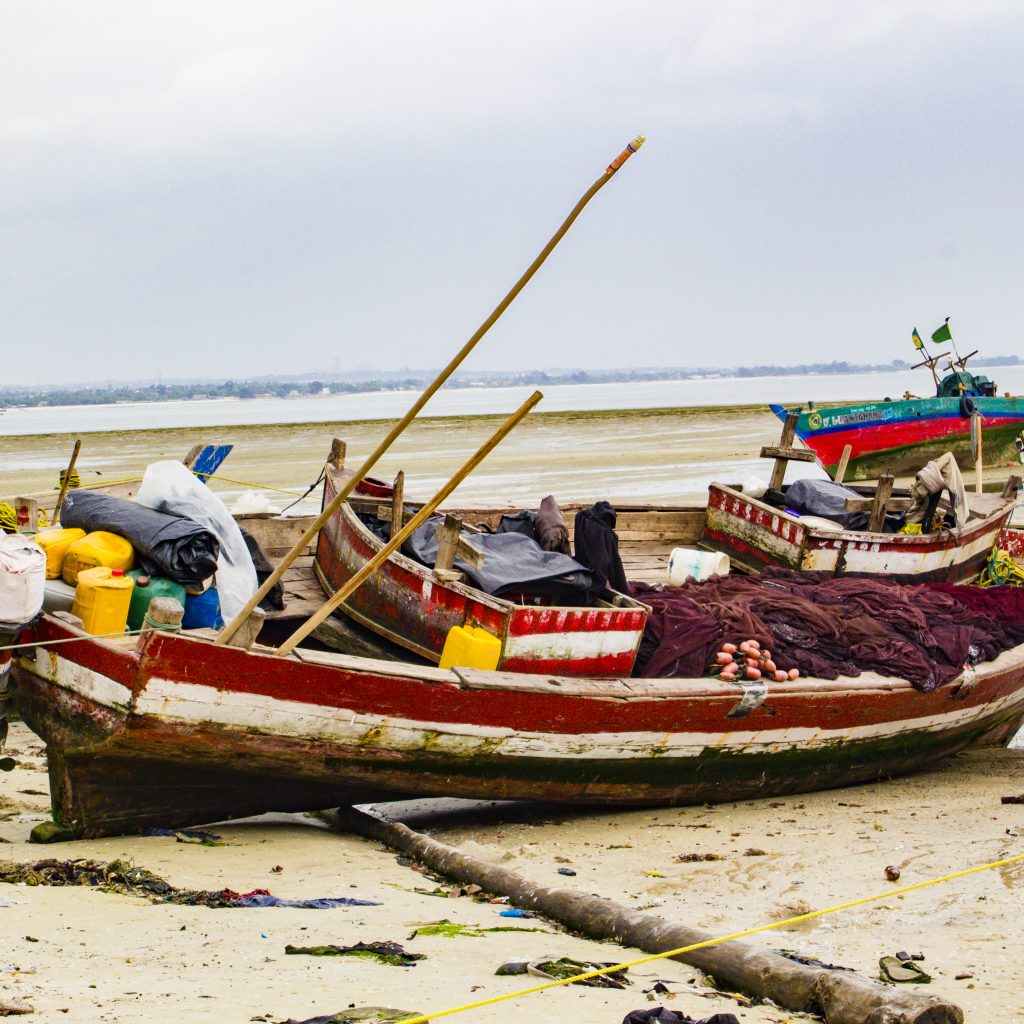March 27, 2025.

By Tuna Alliance
The Silent Nets: A Tale of Vanishing Fish
The ocean had always been a source of life for the people living along the coast. For generations, fishermen had gone out in their small boats, using traditional fishing methods that allowed them to catch what they needed while leaving enough fish for the future. But over time, a new method called Ring Net Fishing became popular, and with it came problems that no one had expected.
Ring net fishing was different from the old ways. Instead of using small nets or fishing lines, fishermen would use large circular nets that could trap entire schools of fish at once. It seemed like a good idea at first. More fish meant more money, and life in the Community improved. But the fishermen did not realize that taking too many fish at once would change the ocean forever.
The Disappearance of Fish
At first, the sea was still full of fish. But as time passed, the fishermen noticed that they had to go farther and farther out to find them. The reason was simple, ring net fishing did not allow fish populations to recover. The method captured both big and small fish, including those that had not yet grown enough to reproduce. Without young fish growing to replace the old ones, the number of fish in the ocean began to shrink.
Fishermen who had once pulled in heavy nets now returned with almost nothing. The rich fishing grounds they had depended on for years were now empty. It was as if the sea had stopped providing for them. They looked to the horizon and wondered what had gone wrong, not realizing that their own methods had led to this crisis.
Ujeje Mamboleo, the secretary of KIWAWAM, a member of Tuna Alliance from Msasani fish market, has provided detailed insights into how ring net fishing contributes to the decline of fish populations.
According to Mamboleo, this fishing method, which uses large circular nets, has caused significant damage to the marine ecosystem, reducing fish stocks and negatively impacting small- scale fishers who rely on the ocean for their livelihoods.
Here are some of the fish species that are disappearing due to ring net fishing, according to statements from some fishermen, including Mzee Ng’anzi and Ujeje Mamboleo.
Parrotfish (Scaridae spp) these are important for coral reef health, but overfishing has led to their disappearance in some location.
Wahoo (Acanthocybium Solandri) are among fish who are highly disappeared due to ring net fishing methods.
Canard-likely refers to canary drums or similar species, commonly found in coastal waters and estuaries. They are bottom-dwelling fish who are often caught in nets.
Mkule refers to Mackerel. They are small, fast fish found in coastal waters and are heavily fished for commercial purposes.
Mbono-known as (Sarda spp) a type of Tuna -related fish that is often found in warm seas and migrates in schools.
Pono-Rabbitfish (siganidae spp) which are herbivorous reef fish often targeted by fishing net. These fish are frequently caught in coastal waters and are also highly affected by ring net fish and now they are disappeared.
Mikonge –barracuda (Sphyraenidae spp), a large predatory fish with sharp teeth, often caught in coastal waters.
Small Pelagic Fish-(Dagaa Papa) or (Sardines or Anchovies) which are crucial for marine fish food.
Mishe –Grunters (haemulidae spp) fish known for the sound they produce and often found on the shallow coastal areas.
Trevally (Misusa) known as (Carangidae spp) fast swimming fish found in tropical and subtropical oceans, commonly caught using net.
The Effect on Other Fishing Methods
Before ring net fishing, traditional fishermen could catch just enough to support their families without harming the balance of the ocean. They used hooks, traps, and small nets that allowed smaller fish to escape and continue growing. But ring nets caught everything in their path, leaving nothing behind for others.
Mzee Ng’anzi also shared his thoughts on the impact of ring net fishing. As an experienced fisherman who has witnessed changes in the ocean over the years, he expressed deep concern about the declining of fish populations. He explained that traditional fishing methods allowed fish stocks to replenish naturally, but the introduction of ring net fishing has disrupted this balance.
According to him, ring nets capture fish indiscriminately, including juvenile fish that have not yet matured. This practice leads to a rapid decline in fish numbers, making it increasingly difficult for small-scale fishermen to sustain.
Mamboleo add that, Fishermen using traditional methods found it harder and harder to catch anything. Their boats were not big enough to travel to the distant waters where some fish still remained. Their traps came up empty, and their families struggled to survive. Some were forced to stop fishing altogether, losing not just their income but also a way of life that had been passed down through generations.
The Destruction of Marine Life
The impact of ring net fishing was not just on fishermen. The entire marine ecosystem suffered. When certain fish disappeared, predators that relied on them for food began to struggle. Larger fish, dolphins, and seabirds could no longer find enough to eat. Coral reefs, which depended on fish to keep them healthy, started to die. The sea, once full of life, became silent and lifeless in many places.
Mzee Ng’anzi add that, the excessive use of nets has cause conflicts among fishers, those using traditional methods struggle to find enough fish to survive.
He called for strict regulations and better enforcement to control destructive fishing methods. He emphasized the importance of preserving marine resources for the future, urging fellow fishermen to adopt sustainable practices that allow fish population to recover
By the time the fishermen realized what was happening, it was too late. The government and conservation groups stepped in, trying to limit ring net fishing and encourage sustainable methods. Some areas were protected, and rules were put in place to prevent overfishing. But the damage had already been done, and recovery would take many years.
A Hard Lesson for the Future
The coastal communities suffered greatly because of the disappearance of fish. Many families had to find new ways to survive. Some turned to farming, while others moved to cities to look for work. The villages that had once thrived on fishing became quiet, their boats left unused on the shore.
But the fishermen had learned an important lesson: the sea is not endless, and it must be treated with care. Some began to adopt sustainable fishing methods, catching only what they needed and allowing fish populations to recover. They shared their knowledge with younger generations, hoping that the mistakes of the past would not be repeated.
The ocean is powerful, but it is also fragile. If treated with respect, it can continue to provide for people for generations to come. But if exploited without care, it can become empty, leaving behind only memories of what once was. And so, the waves carried their message to those willing to listen a warning and a hope for the future.
Tuna Alliance, in collaboration with WWF and other marine conservation organizations, is advocating for sustainable fishing practices by influencing national policies to protect marine resources. Their efforts including awareness rising campaigns, community engagement with fishers, combatting Illegal, Unreported and Unregulated Fishing (IUU), Sustainable Fish Management and promoting better fishing techniques that minimize environmental harm and ensure fish population remain stable for future generations
These efforts collectively aim to protect fish populations, ensure ethical seafood sourcing, and support the livelihoods of responsible fishers while minimize environmental harm.
